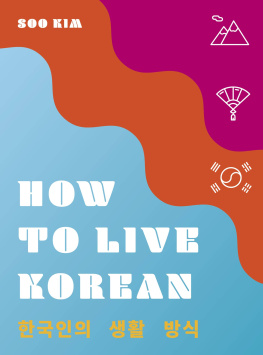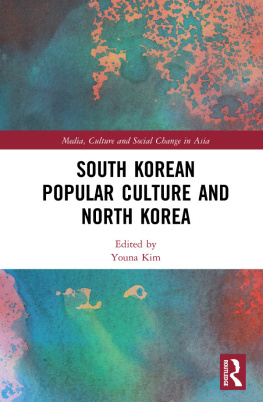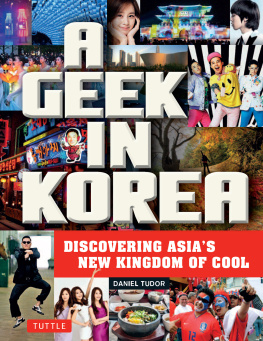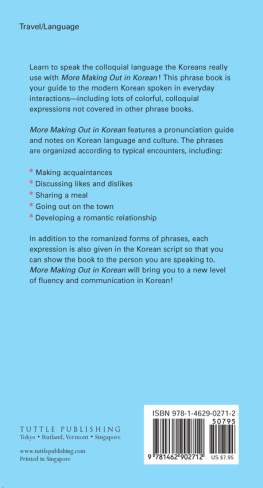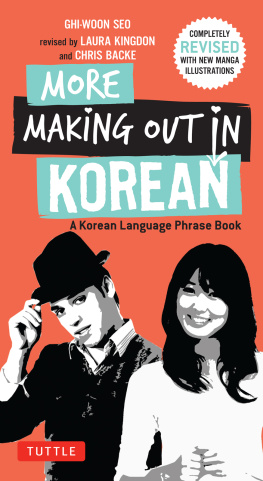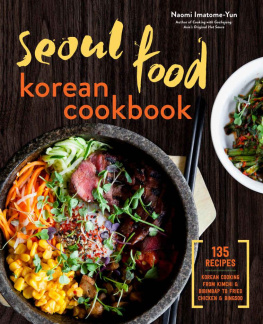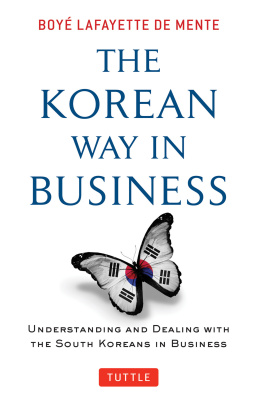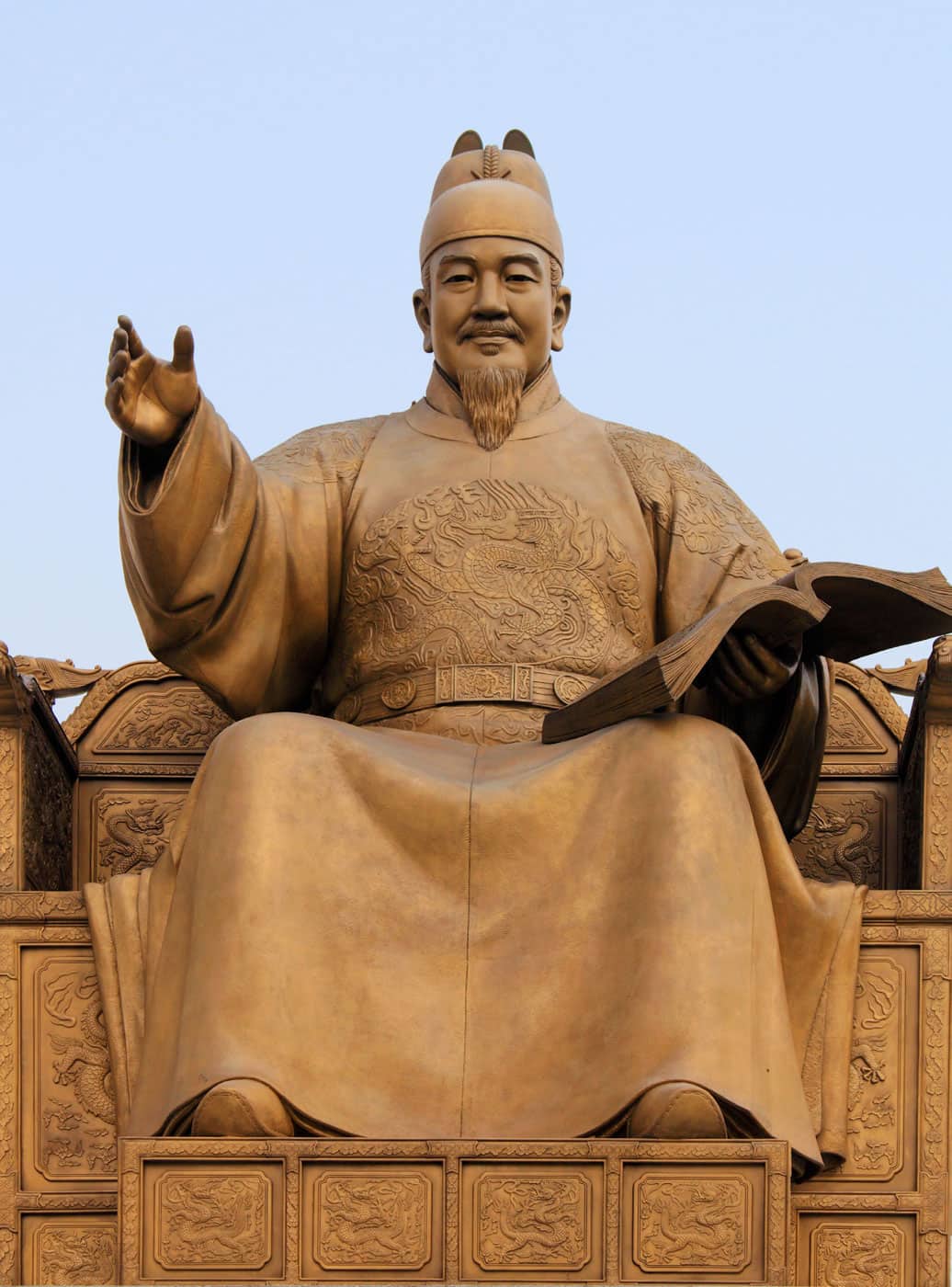Contents
Page List
Guide
Cover
HOW TO LIVE KOREAN
Soo Kim

Introduction
All things Korean, from music and film to food, design and technology, have burst onto the world stage in recent years and South Korea is certainly having a moment. This ancient country has come into the 21st-century limelight with hallyu (Korean Wave), the rise of the popularity of South Korean culture, reaching a crescendo in the last decade.
But before I go on, you must be warned this isnt just a run-of-the-mill cultural travel guide on where to go and what to see in South Korea. The Korean peninsula is much more complex than what these material barometers can measure and, as Aristotle said, the whole is greater than the sum of its parts.
From kimchee to K-pop and everything in between, this book will unpack what it means to be Korean in all its forms, through the unfiltered eyes of a Korean native who has been immersed in a Korean upbringing and cultural setting for nearly 40 years.
The only way to truly know a person is to walk a mile in their shoes. So, here I will take you on a journey through the heart and soul of South Korea, with a few stops along the way, uncovering the way Koreans think, feel, act and ultimately live their lives.
To truly understand how and why people think, act and feel the way they do, its important to trace their origins and follow their story from the past to the present. Here, I will walk you through the rich and diverse history of the Korean peninsula which has created the modern shape of the region today.
Illuminated buildings at nighttime in Seoul.
I will also explain the character and essence of Koreans how they behave, relate to and interact with one another and others and dissect the day-to-day life of Koreans, from family customs, traditions and cultural norms to what family, friendships, dating and marriage mean and entail in Korean society.
Food is at the heart of Korean communities and theres been an explosion of Korean cuisine on the global food scene. The South Korean capital Seoul gained a Michelin Guide in 2016 and now boasts a growing list of Michelin-starred restaurants. This book will trace the evolution of Korean dining customs and eating and drinking culture in Korea, as well as explore the countrys most quintessential dishes.
Whether it be fashion, beauty, celebrities or social media, there is no doubt that Koreans are passionate people with many interests. They take pride in their history and how far theyve come but theyre always looking for the next best thing. Its this spirit of both perseverance and innovation that have been the key ingredients of South Koreas success and continued rise on an economic, cultural and societal level.
With that in mind, I hope this journey through one of Asias most fascinating and sophisticated countries inspires you, at the very least, to do and be passionate just the same, while hopefully showing you a thing or two about how to live Korean.
A table filled with a variety of Korean food.
A Brief History

The early dynasty eras
Whats in a name? An incredible ancient history in the case of Korea, whose past is permanently etched into its name. The term Korea stems from the name Kogury (also spelled Goguryeo), one of the earliest kingdoms of Korea, which later evolved to become Kory (or Goryeo).
Life on the Korean peninsula can be traced as far back as the Paleolithic and Neolithic Ages. Several excavated sites across the peninsula today indicate that the earliest inhabitants used tools made from animal horns to hunt during the Paleolithic period, while from around 8,000 BC, the use of more polished stone tools and farming began. These were the most primitive beginnings of a region that would later be ruled by kingdoms.
While these early clans formed the peninsulas first settlements, its distinctly Korean cultural roots were planted in the first century with the founding of the Three Kingdoms the Kogury kingdom in the north around 37 BC and two other kingdoms in the south (Baekjae in the southwest and Silla in the southeast, which formed around 18 BC and 57 BC respectively).
After Baekjae and Kogury were conquered by Silla, the peninsula was ruled under a Unified Silla kingdom from 668 AD. It was the first kingdom that brought the peninsula under a unified rule, until around 698 AD when the Balhae kingdom was founded and began ruling the north of the peninsula and parts of Manchuria.
Buddhist and Confucian influences
The Unified Silla period was an extensive period of growth for the arts in the peninsula. Having maintained close ties with the Tang Dynasty of China (618907 AD), the country drew much from Chinese culture, including Chinese Buddhism which had a significant influence on Korean culture, especially in architecture, during the Silla period.
The oldest Buddhist stones, carvings, temples and tombs in South Korea, including the Bulguksa Temple (a UNESCO World Heritage Site) as well as the Hwangnyongsa Temple and the Bunhwangsa Temple in the city of Gyeongju, are from the Silla period and showcase the architecture of the era.
Statue of King Seongjong, the sixth ruler of the Kory kingdom, in Seoul.
Confucianism
This ancient school of thought is associated with the teachings of Chinese philosopher Confucius (the Latin form of the Mandarin Chinese name Kng Fz), who lived from 551 to 479 BC. It was established as Chinas official state ideology during the Han Dynasty (206 BC to 220 AD).
Humanism, the development of the self, both individually and collectively in society, forms the heart of Confucianism. Confucius was a strong believer in whats known as the Golden Rule, which states: Do not do unto others what you do not want done to yourself. This concept of reciprocity and moral obligation is fundamental to Confucian beliefs.
Confucianism focuses on practicality rather than spirituality, and self-actualisation through rituals and relationships in everyday life rather than questions of existentialism, gods and the afterlife. It teaches that harmony and social order are maintained when people fulfill defined social and ethical roles, be it through devotion to their parents or loyalty to the government and other acts.
Confuciuss teachings were outlined in a collection of scriptures known as the Chinese classics, which include the Five Classics and Four Books. These scriptures contained the roots of some of the enduring principles of Korean culture, including filial piety (a virtue of utmost respect for your parents, elders as well as rulers), which formed the core of Confucian beliefs.

